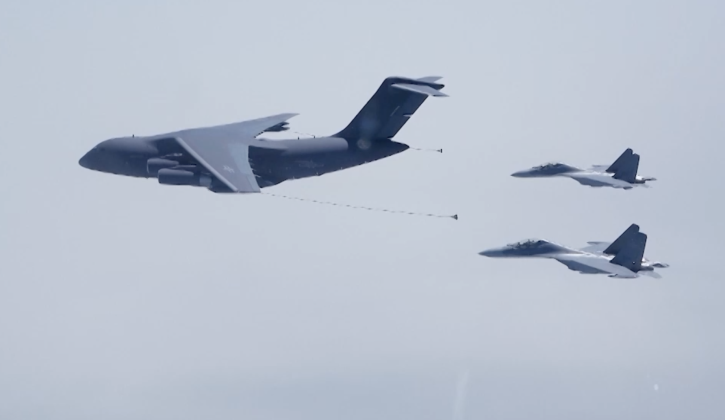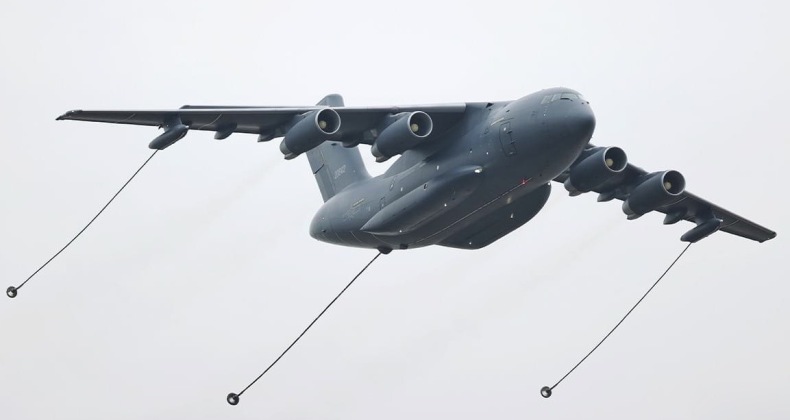News
Chinese J-16 Fighters Train For Long Range High Intensity Missions: Aerial Refuelling Extends Reach to Second Island Chain
Chinese People’s Liberation Army Air Force J-16 fighter units deployed under the Eastern Theatre Command have conducted high-intensity training for long range missions, including aerial refuelling to extend the reach of the aircraft. The simulated combat scenarios included complex electromagnetic interference and multiple interception missions, as well as refuelling under nighttime conditions. Pilots reportedly overcame turbulent air currents, and proved to be able to rely on instrument data and faint light to ascertain the distance from the drogues dropped by YY-20 aerial tankers. This required pilots to continuously adjust their speeds and altitudes, which was particularly complex. The exercises represent part of broader efforts to develop one of the world’s two foremost long range fighter operations capabilities alongside the U.S. Air Force, which has placed a particularly strong emphasis on aerial refuelling since the Vietnam War era.

The J-16 is one of the longest ranged fighters in the world, with a combat radius of approximately 2000 kilometres on internal fuel, or around double that of the American F-35. The provision of support from aerial tankers allows the fighters to conduct operations over particularly extreme distances. The aircraft is a heavily enhanced derivative of the Soviet Su-27 Flanker, and alongside the Navy’s J-15B and J-15T fighters, it is considered a leading candidate for the title of the world’s most capable fourth generation fighter. A particularly outstanding feature of the J-16 is its radar, which is widely considered the most powerful carried by any fighter type in the world, combining a size close to triple that of the F-35’s AN/APG-81, with a particular high level of sophistication facilitated by the advanced state of the Chinese electronics industry. The fighter’s PL-XX air-to-air missile is also estimated to have the longest engagement range in the world, with the fighter estimated to be able to guide it to ranges exceeding 300 kilometres without support from offboard sensors.

The People’s Liberation Army Air Force previously invested relatively little in procuring aerial tankers or training for their use, with two primary factors influencing this decision being the strongly defensive focus of the fleet, and the fact that Chinese fighter aircraft have significantly longer ranges than their Western counterparts. Other than a small number of H-6 bomber airframes converted for aerial refuelling, the country’s first indigenous tanker was the YY-20, which first began combat readiness training only in late 2022. The tanker was developed as a derivative of the Y-20, which is currently the largest transport aircraft in production anywhere in the world. Large scale procurements of the YY-20 by the Air Fore are expected to allow long range fighters like the J-16 and J-20 to operate beyond the Second Island Chain, and potentially into the Arctic, with the development of a much longer ranged sixth generation fighter expected to extend the fleet’s reach significantly further still.












